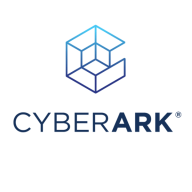

CyberArk Identity and Azure Resource Manager compete in the domains of identity security and cloud resource management, respectively. CyberArk Identity appears to hold the advantage with its robust security features, while Azure Resource Manager excels with comprehensive cloud management capabilities.
Features: CyberArk Identity includes user self-service functions, Office 365 provisioning, and robust password rotation with UiPath Orchestrator integration. It provides strong identity management and security features enhancing user security. Azure Resource Manager offers easy resource management, Azure Blueprints for policy definition and resource group integration, and ARM templates for deploying and managing DevOps pipelines effectively.
Room for Improvement: CyberArk Identity can enhance integration capabilities, reduce complexity in deployment, and improve its customer-facing interface for better accessibility. Azure Resource Manager could focus on customizing templates to better suit varied administrative preferences, enhancing its troubleshooting tools, and improving resource scalability insights to benefit large-scale operations.
Ease of Deployment and Customer Service: CyberArk Identity is known for a straightforward deployment process and offers personalized customer support tailored to security configurations. Azure Resource Manager benefits from its integration within the Microsoft ecosystem, providing streamlined deployment and a substantial knowledge base, backed by Microsoft's extensive resources.
Pricing and ROI: CyberArk Identity presents a cost-effective solution in identity security, delivering a strong ROI due to its enhanced security capabilities at a moderate setup cost. Azure Resource Manager's pricing varies based on consumption, seen as valuable for enterprises heavily leveraging cloud operations with ROI reflecting its capacity to optimize resource management through extensive Azure service integration.
| Product | Market Share (%) |
|---|---|
| Azure Resource Manager | 18.8% |
| CyberArk Identity | 8.5% |
| Other | 72.7% |


| Company Size | Count |
|---|---|
| Small Business | 2 |
| Midsize Enterprise | 1 |
| Large Enterprise | 5 |
| Company Size | Count |
|---|---|
| Small Business | 20 |
| Midsize Enterprise | 4 |
| Large Enterprise | 10 |
The Azure Resource Manager (ARM) is the service used to provision resources in your Azure subscription. It was first announced at Build 2014 when the new Azure portal ( portal.azure.com ) was announced and provides a new set of API's that are used to provision resources.
CyberArk Identity is a versatile identity management solution suitable for a wide range of enterprises. It is designed to enhance enterprise security and improve user experience. Its focus on security, compliance, and operational efficiency, combined with positive user feedback, makes it a strong contender in the identity management space.
CyberArk Identity offers a robust suite of features to manage user identities and access privileges. It focuses on securing access to resources across various environments, including cloud and on-premises applications. Its capabilities include single sign-on (SSO), multi-factor authentication (MFA), lifecycle management, and privileged access management. These features are engineered to streamline access control, enhance security, and ensure compliance with regulatory standards.
According to our user interviews, CyberArk Identity is praised for its reliability and user-friendly interface. IT professionals highlight the ease of integration with existing systems, while business executives appreciate the visibility it provides into access and identity management across the organization. Users also commend the responsive customer support, which is crucial for enterprise-level solutions.
IT Professionals found that CyberArk Identity's focus on multi-layered security significantly reduced the risk of data breaches and unauthorized access. With a centralized dashboard and automation features, you can streamline identity and access management tasks, saving time and reducing complexity. Finally, it helps meet various compliance requirements.
We monitor all Cloud Resource Access Management reviews to prevent fraudulent reviews and keep review quality high. We do not post reviews by company employees or direct competitors. We validate each review for authenticity via cross-reference with LinkedIn, and personal follow-up with the reviewer when necessary.